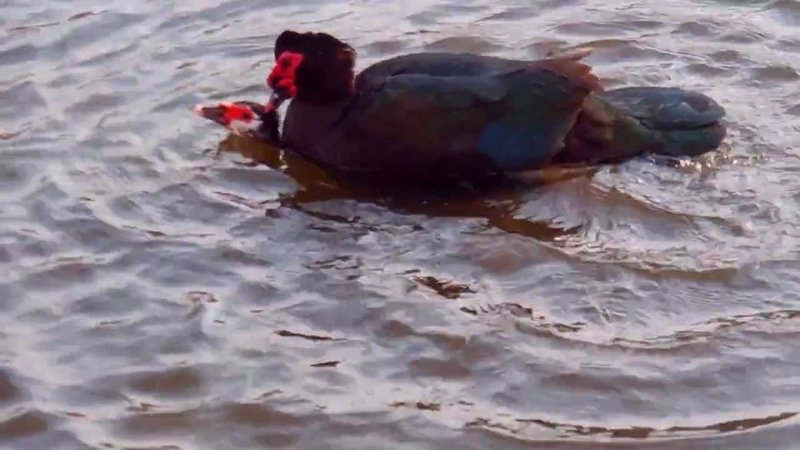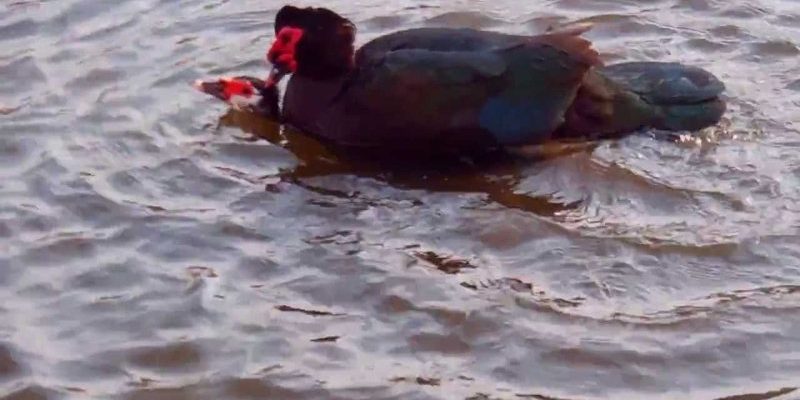
So, why focus on the Muscovy duck? For one, they’re not your average duck. Native to South America, these ducks have a unique charm that sets them apart from their more common relatives. Their courtship behaviors provide insight into their social structures and the bonds they forge. Let’s dive into the enchanting world of Muscovy duck courtship and mating rituals, exploring how these beautiful birds woo their partners and build families.
Rich History of the Muscovy Duck
The Muscovy duck, scientifically known as *Cairina moschata*, has a rich history that dates back to the pre-Columbian era in Central and South America. It’s believed that these ducks were domesticated long before the arrival of Europeans. Unlike many other domesticated birds, Muscovy ducks carry their wild roots close to their feathers, making them more independent and sometimes less predictable.
In the wild, Muscovy ducks are often found in places like rivers and wetlands, where they thrive. Their unique appearance includes a sturdy body, a striking red facial caruncle, and glossy feathers that can range from black to white with stunning iridescence. This distinctive look is just one part of their allure—it’s their courtship dance that really captures attention!
Understanding Muscovy Duck Courtship
Courtship in Muscovy ducks is a vibrant spectacle that can be both entertaining and educational. Males, especially, take center stage during this time, showing off their colorful plumage and hefty physique. You might say they’re like peacocks in the world of waterfowl, strutting their stuff to attract females.
The primary goal of courtship is to establish a bond with a potential mate. This process often starts with vocalizations. Males will emit an array of calls, which can sound like a mix of honks and grunts, to get the attention of females. Here’s the thing: these sounds are not just noise; they communicate a lot about the male’s health and vigor.
Visual Displays
Once a female shows interest, the male steps it up a notch with visual displays. He may puff up his feathers, arch his neck, and perform circling movements around the female. This dance is not just a way to show off; it also forms an essential part of their mating ritual. Imagine a dance floor where each move counts—this is how Muscovy ducks interact.
They’ll often engage in head bobbing and preening, which serves a dual purpose. Not only does it showcase the male’s fitness, but it also reassures the female that he is healthy and serious about courtship. It’s like saying, “Look at me, I take care of myself, and I can take care of you!”
The Mating Process
Once the courtship is successful, mating occurs in a manner that, while natural, can seem a bit chaotic. Muscovy ducks are known for their more vigorous mating behaviors compared to other ducks. The male will grasp the female’s neck gently with his beak during mating, which might look rough, but it’s part of the ritual. It’s essential for successful copulation, ensuring the female has the best chance of becoming fertilized.
You might be wondering how often this happens. Muscovy ducks are known for their polygamous tendencies, with males often courting multiple females during a season. This means that courtship rituals can be seen frequently, as males are keen to find and impress various mates.
Nesting Habits
After mating, the focus shifts to nesting. Female Muscovy ducks are quite selective about where they lay their eggs. They prefer secluded areas close to water, often choosing spots that offer safety from predators. The female usually builds a nest out of reeds, grasses, and feathers, creating a cozy environment for her future ducklings.
Generally, a Muscovy female will lay between 8 to 16 eggs per clutch. Once the eggs are laid, she becomes very protective. This is a critical time for her; she’ll incubate her eggs for about 35 days, showing immense dedication. If you’ve ever seen a mother duck, you know they can be quite fierce when it comes to guarding their young!
Parental Roles
Interestingly, Muscovy ducks have a relatively egalitarian approach to parenting. Both parents often play roles in protecting the nest and caring for the ducklings once they hatch. This cooperative behavior is essential for the survival of the young, as they face many threats in their early life. Males will help defend the area, while females typically lead the ducklings to water, teaching them essential survival skills.
This partnership helps ensure that the offspring not only survive but thrive, showcasing a beautiful example of teamwork in the animal kingdom.
Challenges of Courtship and Mating
While the courtship and mating rituals of Muscovy ducks are captivating, they’re not without challenges. Habitat loss and changes in environmental conditions can impact where these ducks can find suitable nesting sites. Furthermore, the presence of predators can threaten both eggs and ducklings, complicating the mating process.
Another significant challenge is competition among males. With multiple males courting similar females, there can be clashes. These interactions can get physically aggressive, which can sometimes result in injury. Balancing attraction and rivalry is part of life for these vibrant ducks.
The Importance of Understanding These Rituals
So, why does all this matter? Understanding the courtship and mating rituals of the Muscovy duck can give us insight into their ecological role and overall behavior. This knowledge is crucial for conservation efforts. By grasping what influences their breeding success, we can better protect their habitats and ensure their survival.
Moreover, observing these rituals in nature can deepen our appreciation for the beauty and complexity of wildlife. Each courtship dance or vocalization contributes to the rich tapestry of life around us. And hey, it’s pretty entertaining too!
The courtship and mating rituals of the Muscovy duck are more than just a fascinating display; they’re vital to the survival and continuation of their species. From the captivating dance moves of the males to the nurturing dedication of females, every aspect plays a role in ensuring a new generation.
The next time you see a group of Muscovy ducks, take a moment to appreciate the intricate behaviors at play. While you might see some lighthearted antics, there’s a whole lot more happening beneath the surface—love, survival, and the beauty of nature all intertwined. By understanding and respecting these rituals, we contribute to preserving these unique creatures and their environment for future generations to enjoy.

